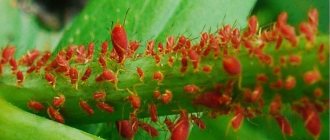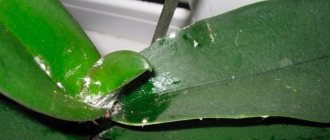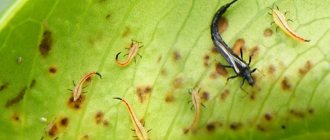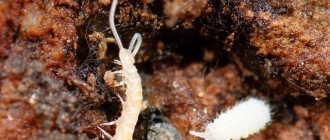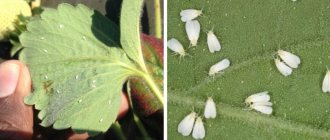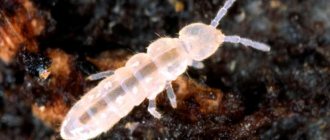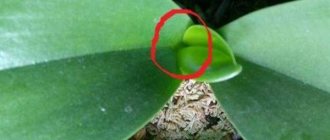Insects in the apartment
The appearance of small white bugs in an apartment will surprise the most experienced homeowner. Among the many types of insects, there are several similar ones, which may turn out to be white, beige or transparent.
Below are photos and names of white insects in an apartment or house:
- silverfish - small bugs up to 1 cm long, having a white, light gray or translucent, elongated body ending in 3 hairs; they are active only at night and can move quickly;
- woodlice - gray, gray-white or brown individuals, the body of which is divided into segments, each of which has a pair of legs, belong to the type of land crustaceans, breathe with gills - such insects are found in the house from dampness and their main diet consists of plant debris and water;
- mosquitoes and larvae - prefer to rest during the day in a room with high humidity;
- sewer beetle - distinguished by its gray-black color and large size (up to 3 cm), a strong shell that protects it from being crushed, very agile and fast, prefers warm and damp places;
- spiders, midges, centipedes or ants - are able to penetrate from the basement or neighboring apartment through ventilation pipes;
- small black bugs in the bathroom, called beetles or flour beetles, feed on cereals and bulk foods.
Insects in the apartment and bathroom
Main types of insect wings photo and structure
The wing of an insect is formed by a modified fold of skin - the thinnest two-layer wing membrane, in which chitinized veins and modified tracheal vessels pass.
As you can see in the photo, there are three sides to an insect wing - the leading edge, the outer (outer) edge and the trailing (inner) edge:
Also, the structure of an insect wing includes three angles: the base, the apex and the posterior angle. According to the direction in the wing, the veins are divided into longitudinal and transverse. The basis of venation is made up of large, often branched longitudinal veins that reach the edges of the wing. Small, non-branching transverse veins are located between adjacent longitudinal ones. The veins divide the wing membrane into a number of cells, which are closed, completely limited by the veins, and open, reaching the edge of the wing.
The structure of the wings is considered in two main aspects: venation (the number and arrangement of veins) and consistency (the thickness and density of the wing plate). There are two main types of venation in insect wings. Reticulated is a dense, fine-mesh venation in which, in addition to longitudinal veins, there are many small transverse veins, forming numerous (more than 20) closed cells. Such venation is developed in dragonflies, orthoptera, lacewings and some other orders. The membranous venation is sparse, with a small number or absence of cross-veins; the cells are large and few in number. This venation is developed in most orders of insects (Lepidoptera, Hymenoptera, Diptera, Coleoptera, etc.). The venation of the fore and hind wings of insects is always the same.
Based on density, there are four types of insect wings. The most common are membranous wings, formed by the thinnest, transparent wing membrane. Only butterflies have membranous wings that are opaque, since they are covered with a layer of tiny scales. The hind wings of all insects are membranous, and in many (dragonflies, lepidoptera, lacewings, hymenoptera, etc.) both pairs are membranous. In a number of insects, the fore wings are compacted and serve as a protective covering. The front wings of orthoptera, cockroaches, mantises, and earwigs are called leathery. These wings are somewhat thickened, but not hard, opaque or translucent, always colored, and usually retain venation. The front wings of bedbugs are called semi-rigid, divided transversely into a compacted base and a membranous apex with developed veins. Such wings are active in flight and serve as a protective cover. Hard wings, or elytra, are the front wings of beetles. They are strongly thickened and chitinized, often hard, colored, and venation is completely lost. These wings, while providing reliable protection for the body, do not actively work during flight. Some forms of wings are distinguished by the nature of their pubescence, for example, fringed in thrips and scaly in butterflies.
Insect habitats
Absolutely all insects cannot do without water, therefore, when they get into an apartment, they look for rooms and places in them located closer to sources of moisture:
- pipes (water supply and sewerage) on which condensate accumulates;
- hard-to-reach and well-hidden areas in the bathroom, near communications;
- wet or damp rugs on the floor, various hygiene products with moisture residues;
- places where dust accumulates and is not removed (the floor under the bathroom, the backs of shelves in a cabinet, etc.).
On a note!
The appearance of white or gray bugs in the bathroom is most often caused by poor sanitary conditions in the room. In addition, some insects may come from neighbors after baiting has been carried out in their apartment. Some exceptionally tenacious specimens then migrate in search of a new home.
Is it possible to eat bug-infested foods?
Faced with the infestation of food by kitchen bugs, the housewife is faced with a dilemma: throw away all the cereal or, after removing the bugs, use it further. Doctors do not recommend preparing porridge from grains infected with bugs. No matter how sorry you are for the products, you will have to part with them.
If bugs are found in flour, you can heat it in the oven at a temperature of 50 degrees for no more than 5 minutes. And only after that add it to dishes.
And keep in mind, even if you carefully sort through everything and warm up the cereal, it will be unpleasant for your household to eat porridge from it, knowing that there were beetle larvae in it. In addition, after the active life of the beetles, the cereal loses its taste.
Silverfish
Such small, long insects are able to move very quickly on their numerous legs, penetrating into the narrowest crevices. They instantly hide when the light is turned on. Silverfish multiply quite quickly, so they pose a problem for apartment owners.
Their diet includes various substances: wallpaper paste, mold fungi, book bindings, sugar-containing products, fabrics and leather (not synthetic), food scraps and even wet paper and rags. Due to their nocturnal lifestyle, silverfish are difficult to spot immediately.
These gray-white beetles appear from dampness and choose corners with high humidity to live. They are not dangerous for humans: they do not bite due to their too small mouth, and they do not spread bacteria.
On a note!
The only harm such insects can cause is to the nervous system of people who are frightened by their rapid movement across surfaces, and if they also crawl over the body, then impressionable women may faint.
Silverfish and woodlice
Who are they, kitchen bugs?
When we see a beetle crawling out of a bag of cereal or flour, we don’t grab a microscope to examine it, but simply squeeze it.
However, among the parasites that attack our supplies, scientists identify three main types: red flour beetles, small flour beetles and bread borers. These are all kitchen bugs, and each of them has their own taste preferences. Major kitchen pests
Red mucoeds are small, 1.5-2.5 mm in length, rusty-yellow insects. They prefer flour, dried fruits, animal feed and corn grits. They live in groups, increasing the humidity of the product they infest with shells from larvae and excrement, which leads to rotting of the latter.
Small mealworms are reddish-brown in color, reach a length of 3.5 mm and have small wings. Insects do not fly, but they feel great throughout the kitchen. They can crawl into the narrowest cracks and uncovered containers. They settle in all types of cereals, from millet to semolina and buckwheat. They love flour and dried fruits.
Bread borers are the most tenacious of kitchen bugs, highly fertile and voracious. Externally they look like small cylinders of light brown or reddish-brown color up to 3.5 mm long. Grinders are so omnivorous that traces of their presence can be found in the bindings of books, and in cans of coffee, and in bags of cereal.
Bread affected by bread grinders
The Suriname flour beetle is another prominent representative of kitchen bugs. It has dark brown chitin, long antennae and an oblong body. The females of this species lay eggs on the packaging of the product. Beetles live for about three years and during this time they can breed up to nine generations. It is difficult to fight them, since they easily tolerate sudden changes in temperature, are not afraid of long-term transportation and are prolific.
Indian moth. Among the destroyers of household supplies, the Indian moth occupies one of the main places. It is not a kitchen bug, but it spoils food no less effectively than they do. Scattering around the house, food moths lay their larvae in all the products stored in the cupboards. It is the insect larvae, which look like small white worms, that turn rice and buckwheat into shapeless mush.
The Indian moth is a very unpleasant neighbor
Woodlice
These insects have an oval body of light gray, white, beige or brown, convex on top, and consists of several segments. The bug has 7 pairs of legs and a hard shell, and in front there are antennae up to half the length of the body. In nature, woodlice love damp places, which is where they got their name, but sometimes they settle near human habitation. They can climb into the cellar and into some rooms in the house (bathroom or toilet) where there is high humidity.
On a note!
You can see such insects in the toilet or bathroom only when you turn on the light at night, because during the day they hide in secluded corners. Woodlice feed on plant debris and can harm plants in the garden. Inside residential premises, they can live not only in the bathroom and toilet, but also in living rooms where there are decorative flowers in pots. Here they find not only water, but also food.
Penetrating into living spaces, woodlice can not only frighten people who are disgusted by insects that run quickly, but due to moisture and mold they become carriers of various fungal diseases, which pose a danger to human health.
Therefore, it is imperative to combat such moisture-loving insects, taking all possible measures to destroy them.
Fight against hay beetles and mold
Dealing with hay beetles is quite easy - it is enough to carry out one or two treatments with contact insecticidal preparations within the infected apartment. The best results are obtained by treatment with cold or hot steam (“hot fog”). This method gets rid of small insects instantly and for sure. At the same time, the proximity to cockroaches, bedbugs, and fleas, if any, is eliminated.
In parallel with insecticide treatment, it is advisable to disinfect the premises from mold, which these insects feed on. A humid environment is always a provoking factor for the occurrence of mold. Hay eaters are not the worst thing to be afraid of, although such a neighborhood is quite unpleasant for a person. The mold next to them is much worse. Mold fungi can affect humans and lead to intractable chronic diseases. Fungicidal preparations are used for disinfection. Hot fog is used against mold. When using this method, the smallest particles of the solution get into the most inaccessible places - under wallpaper, into cracks in the joints of walls and ceilings, peeling plaster, etc.
All shortcomings made during construction must be eliminated by the management company. Repairing cracks in wall joints, repairing roofs and basements, and eliminating leaks is the responsibility of the management company.
Be sure to take measures to dry the premises.
How to dry an apartment after renovation
In winter, drying is not a particular problem - just turn on the central heating radiators. In summer, it is necessary to use heat guns. Do not forget about regular ventilation of the apartment. It is ideal if special ventilation valves are installed under the windows and the hood is functioning. If the humidity remains high, then you need to check the serviceability of the plumbing and pipes. If the plumbing was installed improperly, then there may be hidden faults in the plumbing equipment, then moisture will leak unnoticed, gradually accumulating in wall voids, under the bathtub and other hard-to-reach places.
How to get rid of white insects in the bathroom
If the number of pests is small, then you can get by with simple physical home remedies for insects:
- carry out a general cleaning of the bathroom, removing dirt and condensation deposits;
- treat the entire room with bleach or other disinfectant, then apply a solution of copper sulfate;
- You can reduce indoor humidity by regular ventilation or drying using electrical appliances.
Methods for controlling insects in an apartment
Other means to get rid of small white insects:
- a trap made of a wet birch broom, which is placed in a corner at night, attracts domestic insects and parasites, they get entangled in the twigs of the broom, so in the morning you can burn it or take it away from the house;
- traps made of glass jars, wrapped on the outside with paper or tape, on such a surface any insects can easily climb up and fall down, wanting to eat the bait in the form of an apple, sugar, etc., they cannot get back along the slippery walls;
- moisten a roll of toilet paper and leave it overnight - moisture-loving bugs will rush to get into it, in the morning it must be destroyed, but not unrolled (otherwise they will run away).
Important!
If you do not kill insects, white or transparent bugs can spread throughout the apartment. Therefore, if you fail in your independent struggle, it is better to contact the sanitary and epidemiological service.
Fighting methods
Depending on how heavily infested the products are with bugs, methods of combating them are selected.
Thorough cleaning of the premises is reliable prevention.
- We found two or three bugs in the rump, don’t be upset. Pour the cereal onto a baking sheet and heat in the oven at 100 degrees. The container will have to be destroyed and a new one prepared. Before cooking, rinse the cereal in additional salt water.
- If you're unlucky enough to spot a colony of little parasites in one of your cereal bags, you'll have to throw out the entire product, even if it's barely used. The ubiquitous bugs quickly settle in and inevitably look into open containers and find microscopic cracks in sealed packages. Therefore, you need to conduct a thorough audit of all supplies stored in cabinets.
- It is better to heat-treat visually undamaged products by placing them in the freezer of the refrigerator for two days. The bugs themselves easily tolerate -15 and 50 degrees, but the eggs they lay, which are difficult to notice with the naked eye, will certainly die from such exposure.
- To prevent re-infestation, you should wash the cabinets with disinfectant cleaners. For a better effect, you can wipe the shelves with a solution of 9% vinegar.
- Replace bags and sacks for all products that may become the target of bugs.
- Soak tin and plastic cans for half an hour in a saturated soap solution, then rinse them thoroughly with warm water and dry.
- All cracks in the floor, walls and window sill must also be treated. Check door hinges, drawer latches and shelf holders. Pour boiling water over them and wipe dry.
We suggest you read: What can get into the sofa and bite, where do insects come from?
Chemical and folk remedies
To destroy white insects in the house, insecticidal aerosols are recommended, which should be used every week (Raid, Raptor, Dichlorvos, Clean House, etc.). When carrying out processing, personal protective equipment should be used (respirator or gauze bandage, rubber gloves on hands).
Insect control products
Folk remedies against silverfish and woodlice:
- scatter diatomaceous earth in the cabinets - a substance that kills crawling parasites; its solution can be used to treat cracks in the walls, tile joints, baseboards;
- scatter spices (cloves, etc.), essential oils or citrus zest inside the cabinet, which must be changed every 4 days;
- sprinkle boric acid powder mixed with chalk (in a ratio of 1:4) on the pipes, under the toilet and sink; the solution can be used to treat the surfaces of the pipes;
- against wood lice, it is also recommended to use a solution consisting of soda ash (3 g), tobacco powder and ground red pepper per 1 liter of water - this mixture must be sprayed in places where pests accumulate (plinths, ceilings, cracks and corners in the bathroom, toilet and cellar) ;
- To catch woodlice in flower pots, baits made from potatoes or carrots are used; to do this, cut out the middle of them and leave them overnight - when they get in there, the baits are destroyed along with the bugs.
Danger and harm to humans
Important! Studies have shown that the nocturnal inhabitants of the bathroom, although unsightly, are not dangerous to people.
The bugs do not bite, do not contaminate food, and do not transmit disease. But if they spread strongly, they can harm people.
Silverfish feed on plant foods rich in protein, sugar and starch, and digest cellulose. They multiply quickly, the female reproduces 70 eggs per clutch, the young individuals, having spread throughout the apartment, settle in the trays of pots of domestic flowers and eat the leaves.
At risk are books, wallpaper, photographs, documents, and excrement can also be seen in food.
Woodlice eat living and decaying plants, and with frequent watering and constant moist soil, they move into flower pots. Here, crustaceans are capable of destroying an indoor flower in 2 weeks, eating the leaves, burrowing into the soil and damaging the root system.
Prevention of bugs
In order not to solve the problem when white insects appear in the apartment, the following preventive measures should be taken:
- regularly wipe off condensation and dust on pipes;
- Maintain cleanliness in the bathroom and toilet;
- check how well the ventilation works in service areas (toilet, bathroom, kitchen), if necessary, periodically clean the shafts;
- make cosmetic repairs by sealing all existing cracks near the baseboards, in the walls and on the floor;
- If there is a leak, the taps should be repaired immediately, avoiding the accumulation of moisture;
- dry corners that are too wet using a fan heater, because insects can lay eggs in such places, and hot air will destroy them;
- if mold appears, such areas should be thoroughly treated with chlorine and then dried;
- in the kitchen you should regularly check all cereal stocks and do not leave crumbs;
- prevent the accumulation of garbage, remove food and other waste in a timely manner.
With regular cleaning, drying and compliance with hygienic rules in service areas (bathroom, toilet and kitchen), no white insects will be able to settle in the house due to the lack of the high humidity necessary for them.
Mold is the cause of hayworms
Those most at risk are corner apartments, where the humidity is always higher, apartments on the lower floors, especially if the house has basements, and apartments on the upper floors - next to the roof. Gradually, insects can spread throughout the house along the riser or cracks in the walls and ceilings. It is almost impossible to remove mold that has accumulated between walls and plaster on your own. Panel houses are especially affected. Monolithic and brick structures are inhabited by hay eaters much less frequently.
The situation is aggravated by the fact that with poor quality construction, partial or complete freezing of the walls is possible. The worst option is when the insulation is installed indoors. Gradually, condensation accumulates between the insulation board and the wall, which has no normal outlet. Mold begins to grow in the cracks. The lack of normal ventilation is also an important factor. It is ideal when ventilation covers all rooms in the apartment. In fact, ventilation openings are most often installed only in the kitchen and bathroom. That's all. Considering that modern apartments are entirely filled with plastic windows (without supply valves in the walls) and solid entrance doors, ideal conditions are created for the development of mold and the infestation of associated pests.
Harm from mold to humans
The smallest mold spores will always be present in the air of the room where it has started. These spores, when placed in a favorable environment, germinate, giving rise to a new colony of the fungus. Such a colony can even develop in humans. Often, a mushroom body, similar to chronic sinusitis, is detected on an x-ray in the maxillary sinuses. How did it get there? Very simple. The person inhaled the spores, and they sprouted in the favorable environment of the nasal mucosa and turned into an extensive fungal body, gradually poisoning the body. If a person feels chronic fatigue and has been tormented by a runny nose for months, then it is likely that the cause is mold, which is gradually developing in his body.
The main types of pairs of antennae in insects
The main tactile and olfactory organs of insects are paired articulated antennae (or antennae) movably attached, usually on the forehead, between the eyes, in special articular pits covered with a membrane. The length and shape of antennae in insects is extremely diverse and often serves as a visual indicator for identifying families, genera, and species of insects. The number of segments in the antennae varies among different insects from three to a hundred or more. In the general structure of the antennae of insects, three sections are distinguished: the manubrium is the first segment, the stalk is the second segment, and the flagellum is the totality of the remaining segments. Only the arm and leg are equipped with their own muscles and are actively mobile. Inside the leg there is a cluster of special sensitive cells - the Johnston's organ, which perceives environmental vibrations, and in some insects also sound vibrations.
Insects have numerous types of antennas. Setae-like antennae are thin, tapering towards the apex (cockroaches, grasshoppers), and filamentous antennae are thin, uniform along the entire length (ground beetles, locusts), and are also called simple due to their typical shape. The bead-shaped type of insect antennae is distinguished by convex, laterally rounded segments (darkling beetles). The segments of saw-shaped antennae have sharp corners, giving a jagged shape (click beetles and longhorned beetles). The elongated processes have segments of comb-like antennae (some species of click beetles and moths). The type of antennae of insects with the apex thickened due to the expanded last segments is called club-shaped (day butterflies). Antennae with a large, pronounced club are capitate (grave-digger beetles and bark beetles). The antennae of insects with a club consisting of wide lamellar segments are called lamellar-clubs (chafer beetles and dung beetles). The spindle-shaped antennae widen towards the middle and are narrowed and pointed at the apex (hawkmoth butterflies). The cranked antennae are bent at the articulation of the handle with the rest of the body (wasps, ants). The geniculate pairs of insect antennae ending in a club or comb are called, respectively, geniculate-clubs (weevils) and geniculate-combed (stag beetles). The segments of the feathery antennae are equipped with densely arranged thin sensitive hairs (moths, some mosquitoes). The setaceous antennae are always short, 3-segmented, with a sensitive seta (flies) extending from the last segment. Antennae with asymmetrical segments of different shapes are called irregular (blister beetles).
How to deal with the problem
Many people believe that if insects appear in the toilet, bathroom or any other room, it is almost impossible to get them out. In fact, this is not so, because for each type of insect there is an effective method of control.
Since silverfish and other white bugs can often be found in the bathroom, it is necessary to consider ways to combat them. Naturally, you won’t be able to get rid of insects in one day, so you need to be patient.
First of all, you need to make sure that the bathroom is fully and systematically ventilated. It is best if it has built-in constant ventilation. This is required in order to reduce the level of air humidity. The lower the humidity, the less likely it is that such bugs will appear in the bathroom.
During the autumn-winter period, it is worth making sure that the temperature in the rooms, including the bathroom, is maintained within 23°C. This is due to the fact that such insects live at temperatures of 24°C and above. Therefore, if it is very hot in your apartment in winter, then it is advisable to ventilate the room at least several times a day.
Equally important is how often you remove dust from hard-to-reach places. If possible, clean up and get rid of dust in places where it exists.
These bugs often start there.
Make sure that there are no very damp places in the bathroom. This is especially true for damp corners. Use a fan heater to dry wet corners. Also make sure to constantly clean the toilet and bathroom. In this case, ordinary chlorine will come to the rescue. It will act not only as an excellent disinfectant, but also as a means that can combat the presence of various bugs. Therefore, try to disinfect at least once every few weeks.
Today in stores and on the market you can find many different products that can fight bugs. These are so-called insecticidal aerosols. Therefore, as a preventative measure, you can occasionally treat all surfaces in the bathroom with such aerosols.
If you notice that you have white or other colored bugs in your bathroom, be sure to proceed to taking measures to combat these insects. Only if you take timely action to eliminate the bugs will you be able to quickly and efficiently get rid of their presence in the bathroom.
Order moth treatment
In our company you can order treatment against hay beetles. We offer you favorable terms of cooperation. By contacting us, you will be able to appreciate the following advantages:
- The treatment is carried out carefully, separately for each hard-to-reach corner of your room.
- For treatment, drugs of a narrow spectrum of action are used, aimed at destroying hay beetles. They will not harm animals or human health.
- You receive a quality guarantee for every service ordered from us. We provide not only complete elimination of hayworms, but also protection against their reappearance for a long time.
Our company uses only high-quality preparations for processing, and the processing itself is carried out in full compliance with safety regulations.
What kind of bugs are these?
Many people faced with this problem are concerned about one question - what kind of parasites are these?! Small black or brown bugs that live in the apartment are called skin beetles. They enter the room in several ways - through windows, ventilation holes, cracks in the floor and walls, as well as through clothing, shoes and hair. An adult insect has an oval body shape, the length of which does not exceed 5 mm. It practically does not move, and in times of danger it completely freezes. If you touch the skin beetle with your finger, it will roll over onto its back. Most often, residents of apartment buildings become acquainted with them.
To lay eggs, leather beetles choose surfaces with a fleecy or rough texture - wool, carpets, fur, and various fabrics. Breeding time is from April to June. The female lays eggs for 2-10 days. Their largest number is almost a hundred during the period. The eggs are white in color, up to 2 mm long, and very soft and pliable to the touch. The duration of their development ranges from 2 to 60 days - the exact period is affected by air temperature. Having emerged from the cocoon, the newborn bugs almost immediately set off in search of a partner for mating. In one year, a whole generation of insects can appear in an apartment! Interestingly, the female, having completed her mission, immediately dies.
Carpet beetles prefer to live in well-lit places, so they can be seen on the windowsill or in lamp shades. But they are not at all attracted to moisture in toilets and bathrooms.
flies
Which insects are capable of carrying pathogens and parasitic eggs and are often companions of humans? These are flies; their appearance at home, and especially near food, is unacceptable. What will help in the fight against them:
- If flies live near your apartment and fly inside, keep a fly swatter ready. Screens on windows help limit their access, like other insects.
- Hanging Velcro strips are a very effective solution. When a fly enters a room, the first thing it does is fly towards the pleasant smell of “Velcro” and does not have time to do any harm.
- Lovers of indoor plants can have geraniums, which repel flies. Sprigs of tansy placed in several places also help greatly with this.
Blood-sucking insects photo and name of each
Blood-sucking insects in an apartment mean not only ruined sleep and nightmares, but, above all, a constant danger of contracting diseases such as plague, encephalitis, anthrax and typhoid. This confirms the need to take measures to destroy them.
Such blood-sucking insects in central Russia are most often found:
- bed bugs,
- fleas,
- lice,
- mosquitoes
- Bed bugs. Among apartment bloodsuckers, this species is the most unpleasant. They are widespread in almost all countries. The fight against them has not yet been successful; they survive even in cold and heat. The length of the parasite is 2-3 mm, maximum 8 mm. Bedbugs feed on human blood several times a week. Larvae drink blood to grow, adults drink blood to reproduce. They pierce human skin, reaching blood vessels. Bedbugs are active only at night. During the day they hide. The shelter can be furniture, a sofa, a mattress or household appliances, baseboards, books. When insects settle, they form nests. The bites leave marks on the body in the form of tracks of red spots. The puncture site looks like a dot. By such signs it is easy to recognize the pest. If there are a lot of them, then the bites can lead to allergies, which in children often results in anemia.
- Fleas. Fleas are colored yellowish-brownish. Their size is 1–5 mm. The body is flattened on the sides, there are no wings, so insects move by jumping over a long distance, exceeding the length of its body by more than two hundred times. The flea's body is covered with numerous bristles and spines, with their help it clings to the owner. Fleas don't have eyes. Her life goes through the following stages:
- egg,
- larva,
- doll,
- adult.
The flea is active during the day. The mouthparts are sucking and easily pierce the skin. The bite is similar to that left by bedbugs. But the bite path is usually shorter. They are carriers of plague, anthrax, typhoid, encephalitis, and brucellosis. Suffice it to recall the Medieval plague epidemic, which was spread by fleas.
3. Lice. Depending on their habitat, they come in three types: bed, head, pubic.
Head lice are the most common. Both adults and children, most often from 3 to 12 years old, can become infected with them. This is due to the frequency of physical contact, especially in gardens, and the use of shared objects. for example, toys. Lice do not jump or fly. Infection is possible only by touch. They are also transmitted through clothing. Symptoms of pediculosis:
- itching of the head and scratching of the skin,
- detection of nits, white insect eggs,
- rash on the back of the neck.
4. Mosquitoes. The insect has adapted to live in urban environments. Mosquitoes can be present in the basements of houses all the time. At night they fly into apartments. Larvae develop even in dirty puddles and barrels of water. To lay eggs, a female mosquito needs to feed on blood. One drop gives life to hundreds of mosquito eggs.
The female mosquito cuts the skin with its jaws and fills the wound with contents that slow down blood clotting, facilitating absorption. This causes itching, redness of the skin and sometimes leads to severe allergic reactions.
Preventive measures against blood suckers:
- compliance with sanitary and hygienic measures,
- treatment of insects and their habitats with various pesticides and folk remedies.
If blood-sucking insects cannot be removed from your apartment, it is better to contact a specialist. It is also advisable to take measures together with neighbors and representatives of the building management, since the breeding site can be a neighboring living space or common areas: landings, basements, elevators.
Very small insects in the kitchen. Types of bugs
It is important to understand that depending on the type of new kitchen inhabitants you have, methods of dealing with them may vary significantly. And sometimes they are not needed at all: for example, small (less than one millimeter) white bugs that can occasionally be seen in the kitchen are ordinary wood bugs. They feed on dust from your furniture, are non-toxic and do not harm human health.
White bugs: not a very pleasant, but harmless neighborhood.
True, there is another side to this - they can serve as food for other bugs with more unpleasant behavior. Therefore, we recommend that you read the information below and try to determine who you are up against and what products you may have to throw away.
One of the most common types of bugs in the kitchen is the red flour beetle. This is a tiny parasite, up to two millimeters in length, with small, hard wings of a bright red color. By themselves, they are quite harmless: they do not eat food and do not live long. However, they multiply quickly. Their small white larvae are almost invisible in foods: flour, rice, oatmeal. Small worms actively feed on cereals, leaving waste in them and spoiling the food.
Red flour eaters feed not only on flour, but also on everything they can get their hands on.
Determine: Musty smell and holes drilled in the grains.
The mealworm is much more dangerous for humans. A brown bug up to three millimeters in size has a mustache and powerful mandibles. You can find it in stocks of flour or potato starch, but there are also not too whimsical individuals for which any crumbly product will suit.
Not only destroys food, but also harms health.
It is noteworthy that they do not strive to completely eat even their favorite flour - as soon as it begins to smell unpleasant, the entire colony migrates to the next container.
Their danger lies in the fact that the waste products of the flour beetle are dangerous to humans and can cause serious poisoning.
Determine: Products gather in lumps and acquire a damp smell.
The peculiarity of the bread grinder is its incredible gluttony. The four-millimeter bug is ready to eat any food that can be found in your kitchen cabinets: flour and pasta, cereals, beans, coffee, tea, nuts, dried fruits and even tobacco.
A small bug can drain all your supplies.
There is no particular harm from it, but a few bugs can ruin a significant amount of stock.
Determine: Usually they don’t hide much, so they are immediately visible.
It should be noted that some people prefer to classify food moths as bugs in the kitchen. This is fundamentally incorrect: moths are a completely different species and need to be dealt with using other methods. We wrote more about how to get rid of food moths in this article.
Insect head structure
The head is the most compact part of the insect body. The segments included in the structure of the insect's head merge without discernible boundaries. Their integument forms a dense monolithic head capsule. The head has different parts, often separated by sutures. The lower front part of the head is called the clypeus, followed by the front part - the forehead, then the upper part of the head - the crown, divided by a longitudinal suture into two halves. The area behind the crown - the occiput - is located above the foramen magnum. The lateral parts of the head, located below and behind the compound eyes, are called cheeks and temples, respectively.
How dangerous are household pests?
Photo of an adult fool with multiple magnification
To be fair, it should be noted that only some species of collembola are classified as pests. But there are springtails that eat nematodes and enchytraeids, thereby bringing benefits. Insects feeding on rotting organic matter improves soil formation. The white fool is one of those four species of “brothers” that stand out for their harmfulness from the more than 4 thousand that live on earth. We can talk about the danger of insects in the case of a sharp growth of the colony, when there is not enough rotting residue in the pots to feed, and the thinnest thread-like roots of the root system begin to be eaten. Most often, orchids, violets, and gloxinias fall into the risk zone.


